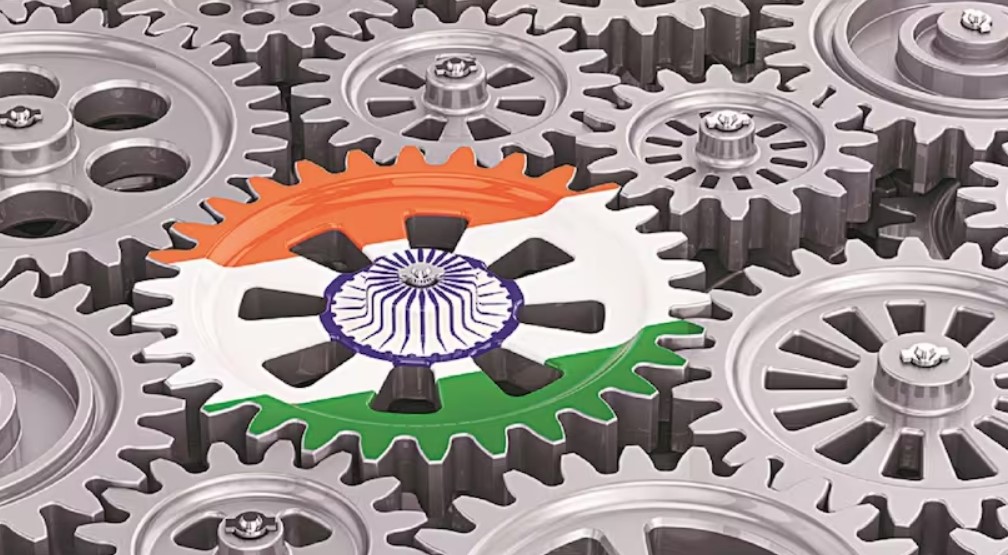India to Maintain Leading Growth Among Largest Economies, World Bank Reports
The World Bank has retained India’s FY25 growth forecast at 6.6%, emphasizing the country’s status as the fastest-growing large economy. India’s growth rate is projected to average 6.7% annually from FY25 to FY27, despite a slowdown from FY24’s 8.2% growth. This moderation is due to a high investment base, yet investment and consumption are expected to remain robust. The Reserve Bank of India forecasts a slightly higher growth of 7.2% for FY25.
Source: Business Standard
I-T Department to Finalize 170,000 Reassessments by March 2025
The Indian Income Tax Department aims to complete 170,000 reassessments by March 2025, part of 600,000 cases reopened between March 2021 and March 2024. This involves undisclosed income assessments for years 2014-15 to 2022-23. Around 430,000 cases have been assessed so far, with the remaining under Section 148 of the Income Tax Act. The reassessment targets individuals with incomes above ₹50 lakh, potentially involving over ₹1,000 crore.
Source: Business Standard
India to Maintain Deficit Target Despite Election Setback
Despite failing to win an outright majority in recent elections, Prime Minister Narendra Modi’s government will stick to its fiscal deficit target of 5.1% of GDP for 2024-25, down from 5.6% the previous year. Despite coalition partners’ demands for increased welfare spending, a government source confirmed no fiscal loosening is planned. The final budget, expected in July, will maintain similar figures to the interim budget announced in February.
Source: Reuters
Apple CEO Tim Cook Highlights AI Limitations, Introduces Apple Intelligence
At WWDC 2024, Apple unveiled Apple Intelligence, aiming to enhance AI features on iPhone, iPad, and Mac. Despite high standards, CEO Tim Cook admitted the technology isn’t flawless, acknowledging potential errors or “hallucinations.” Apple emphasizes “personal intelligence” for user context and privacy. A partnership with OpenAI integrates ChatGPT, boosting Siri’s capabilities. Cook described Apple Intelligence as a new innovation chapter, with the system launching in beta for further refinement.
Source: Financial Express
Apple Stock Soars 6% After AI Partnership with OpenAI Announced
Apple’s stock surged 6.24% to a record $205.17 following its AI strategy reveal at WWDC, pushing its market cap above $3 trillion. Key announcements included a partnership with OpenAI and AI-enhanced features for iOS 18, aimed at increasing user productivity. These updates, limited to the iPhone 15 due to advanced processing needs, signal Apple’s commitment to integrating AI into its ecosystem.
Source: Live Mint
China Snubs Pakistan on CPEC 2.0 Investments
Pakistani PM Shehbaz Sharif returned from China with modest gains, failing to secure major investments for CPEC 2.0. Despite high expectations, Beijing’s response was lukewarm, resulting in agreements only on the first phase of the $6.7 billion ML-1 railway project and a Karakoram Highway upgrade. Experts suggest China is wary of further investments due to Pakistan’s economic instability and security concerns.
Source: Business Standard
Navigating Personal Loans for Freelancers: Key Challenges and Tips
Freelancers face unique challenges when seeking personal loans, such as verifying income without regular paychecks and maintaining a strong credit score. Critical factors include providing tax returns, bank statements, and business contracts as proof of income. To enhance loan approval prospects, freelancers should shop around for the best rates, prepare all necessary documentation, and consider a co-signer. Understanding these nuances can significantly improve chances of securing favorable loan terms.
Source: Live Mint
India’s New Antitrust Law Worries Tech Giants
India’s proposed Digital Competition Bill targets “systemically significant digital” firms like Apple, Google, Meta, and Amazon. Aimed at preventing market concentration, the law would require fair and non-discriminatory practices, with penalties up to 10% of global turnover for violations. Companies must avoid exploiting non-public user data, favoring their own products, or restricting third-party app usage. This move parallels the EU’s Digital Markets Act and aims to balance power between big tech and smaller firms.
Source: Reuters
Bitcoin Drops 3.7% to $66,870 Amid Market Caution
Bitcoin, the world’s largest cryptocurrency, fell by 3.7% to $66,870 on Tuesday. This decline is attributed to trader anxiety ahead of the US inflation data release and the Federal Reserve’s upcoming monetary policy decision. Strong US employment figures have also dampened risk appetite, causing significant sell-offs in Bitcoin exchange-traded funds (ETFs). Regulatory uncertainties in Europe further contribute to Bitcoin’s bearish trend. Despite the downturn, institutional interest in cryptocurrencies remains robust.
Source: Live Mint
Ola Electric Secures SEBI Nod for Rs 7,250 Crore IPO
Ola Electric, led by Bhavish Aggarwal, received SEBI approval for its Rs 7,250 crore IPO, marking the first Indian EV company to go public. The IPO includes a fresh issue of Rs 5,500 crore and an offer for sale of 95 million shares. With a market share over 35% in FY24, the company aims for a valuation of $7-8 billion. Funds will support capex, debt repayment, and R&D.
Source: Business Standard
Reliance Power Shares Surge 22% in a Week
Anil Ambani-owned Reliance Power’s share price soared by 22% in a week, hitting an intraday high of ₹28.68 on Tuesday. Experts attribute this rise to the company becoming debt-free, repaying around ₹800 crore to lenders, and enhancing operational efficiency. The stock’s fresh breakout at ₹28 suggests potential targets of ₹32 and ₹36 per share. Investors are advised to buy with a stop loss at ₹24.
Source: Live Mint
Lobby Group Urges RBI to Reconsider Increased Provisions for Infrastructure Loans
The Finance Industry Development Council (FIDC) has requested that the Reserve Bank of India (RBI) review its proposal to increase loan provisions for infrastructure projects from 0.4% to 5% during the construction phase. The FIDC argues this could hike interest rates by 1-1.5 percentage points and suggests retaining current provisions, only increasing them in case of project delays. They also oppose a minimum limit for lending consortia, favoring commercial agreements. The Indian Banks Association is also expected to oppose the higher provisions.
Source: Reuters


Leave a Reply